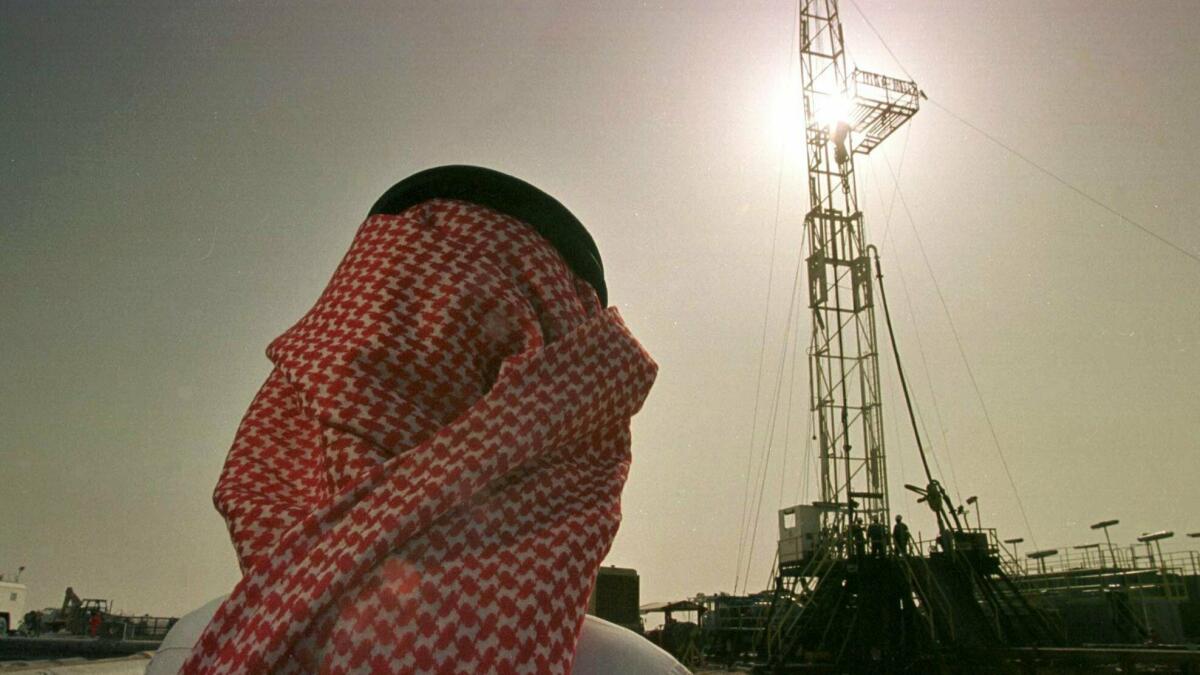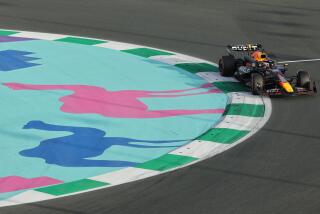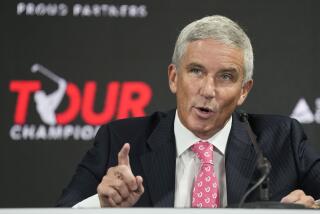Saudi Arabiaâs Aramco is the most profitable firm on Earth, filing reveals

The first official glimpse of Saudi Aramcoâs financial performance confirms the state-run oil giant can generate profit like no other company on Earth: Net income last year was $111.1 billion, easily outstripping U.S. behemoths including Apple Inc. and Exxon Mobil Corp.
The financial filing was made ahead of Aramcoâs debut in the international bond market. The bonds, being pitched to investors this week in a global roadshow, have forced Aramco to reveal secrets held close since the companyâs nationalization in the late 1970s, casting a light on the relationship between the kingdom and its most important asset.
The debt raise by Aramco â which produces about 10% of the worldâs crude oil â is a Plan B to generate money for Saudi Arabiaâs economic agenda after an IPO of Aramco was postponed. In effect, Crown Prince Mohammed bin Salman is using the firmâs pristine balance sheet to finance his ambitions.
Aramco began as a U.S. venture with a concession for oil rights in Saudi Arabia and was fully acquired by the Saudi government in 1980. Aramco officials declined to comment.
Both Fitch Ratings and Moodyâs Investors Service assigned Aramco the fifth-highest investment grade, the same as Saudi sovereign debt but lower than that of oil majors Exxon, Shell and Chevron Corp., partly because Aramco doesnât generate as much cash per barrel because of its heavy tax burden.
The 470-page bond prospectus, filed with the London Stock Exchange, detailed a litany of risks for prospective investors, including missiles falling on Aramcoâs installations, the impact of proposed U.S. antitrust laws on OPEC, the fight against climate change, and even the risk that Saudi Arabia will break the peg between its currency, the riyal, and the U.S. dollar.
It also revealed the Saudi oil giant was the victim of a âsuccessfulâ cyberattack in 2012 that forced the company to move some operations into âmanualâ mode.
While the prospectus shed light on the richest company on the planet â its net income is more than five times that of Exxon Mobilâs $21 billion in its last full year, and nearly twice that of Appleâs $60 billion â it also showed how reliant Aramco is on high oil and natural gas prices.
In 2016, when the price of Brent crude plunged to an average of $45 a barrel and OPEC cut production, the company struggled to break even. Net income for the full year was just $13 billion and free cash flow a tiny $2 billion.
The kingdomâs dependence on the company to finance social and military spending, as well as the lavish lifestyles of hundreds of princes, places a heavy burden on Aramcoâs cash flow. Aramco pays 50% of its profit on income tax, plus a sliding royalty scale that starts at 20% of the companyâs revenue and rises to as much as 50% with the price of oil.
Aramco reported cash flow from operations of $121 billion and $35.1 billion in capital spending, and paid $58.2 billion in dividends to the Saudi government in 2018, according to Moodyâs. In a presentation to potential bondholders, the company said its âordinary dividendâ last year was $52 billion. There wasnât an immediate explanation about the gap between the two figures.
Fitch said its rating for Aramco â A+, one level below the AA- rating for Shell and well behind Exxonâs top Aaa level â reflects the âstrong linksâ between the company and the kingdom, and the influence the state has on Aramco by regulating the level of production, taxation and dividends.
âOver time, a low oil price environment could cause a sustained fiscal deficit for Saudi Arabia that could result in changes down the line for Aramcoâs fiscal regime,â said Neil Beveridge, an energy analyst with Sanford C. Bernstein & Co. in Hong Kong. âYou canât disassociate the sovereign government from Aramco given the very close relationship and the contribution Aramco makes to the overall funding for Saudi Arabia.â
Aramco reported funds flow from operations â a measure closely watched by investors and similar to cash flow from operations â of $26 a barrel equivalent of oil last year, according to Fitch. Thatâs below what big oil companies such as Shell and Total SA enjoy, at $38 and $31 per barrel.
The bond plan, credit rating and the publication of the first extracts of Aramcoâs accounts are all part of the ambitions of Mohammed, who controls most of the levers of power in the kingdom and wants to pursue an IPO as part of his plans to ready the country for the post-oil age.
The bonds are expected to help pay for Aramcoâs $69-billion acquisition of majority shares in Saudi petrochemical firm Sabic from the kingdomâs sovereign wealth fund. The deal with Sabic pumps capital into the Public Investment Fund, which is overseen by the crown prince.
Mohammed has transformed the fund to back major development projects throughout the kingdom amid delays to Aramcoâs IPO. The crown princeâs early efforts at attracting Western investors for his social and economic transformation plans suffered a setback following the killing of Washington Post columnist Jamal Khashoggi by Saudi agents inside the countryâs consulate in Istanbul last year.
The Washington Post contributed to this report.
More to Read
Inside the business of entertainment
The Wide Shot brings you news, analysis and insights on everything from streaming wars to production â and what it all means for the future.
You may occasionally receive promotional content from the Los Angeles Times.










